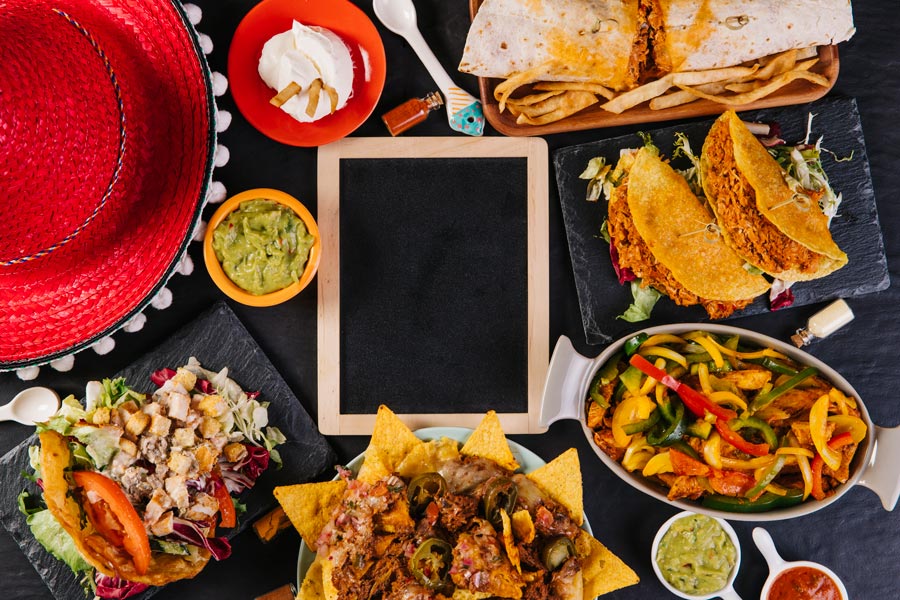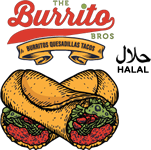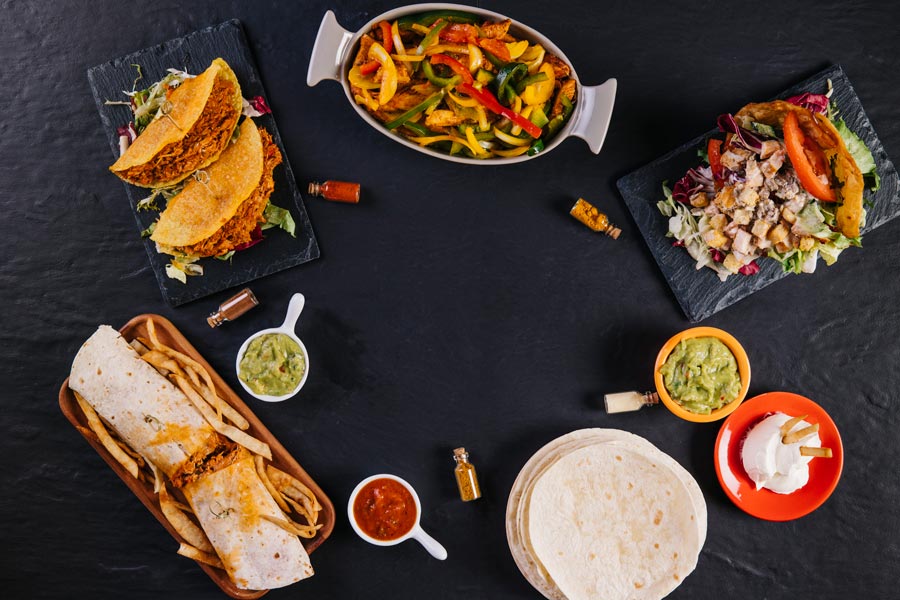Tex-Mex cuisine represents one of America’s most successful culinary fusion stories, transforming from a regional border food into a global phenomenon that graces tables worldwide. This distinctive cooking style emerged from centuries of cultural exchange, immigration patterns, and the unique geographic positioning of Texas along the Mexican border. Understanding Tex-Mex’s rich history reveals not just the evolution of food, but the story of cultural adaptation and innovation in American cuisine.
Find the Etymology and Railroad Connection: How Tex-Mex Mexican Food Got Its Name
The term “Tex-Mex” originates from an unexpected source: transportation infrastructure rather than food. During the 19th century, the Texas Mexican Railway, commonly abbreviated as “Tex-Mex,” connected San Antonio, Texas, to Mexico, facilitating trade and cultural exchange between the two regions. This railway system became instrumental in transporting goods, livestock, and people across the border, inadvertently creating the perfect conditions for culinary fusion.
According to the Oxford English Dictionary, Tex-Mex cuisine is defined as “A Texan style of cooking using Mexican ingredients and characterized by the adaptation of Mexican dishes, frequently with more moderate use of hot flavourings such as chilli; food cooked in this style.” This definition captures the essence of adaptation that defines the cuisine – maintaining Mexican foundations while accommodating local tastes and available ingredients, such as those found in Canadian Mexican grills.
Historical Foundations: Spanish Colonial Influence on Burrito and Taco Origins
The roots of Tex-Mex cuisine extend far beyond the 19th-century railroad era. Spanish colonization in the 16th century laid the groundwork for this culinary evolution. Spanish missions throughout Texas served as the first cultural melting pots, where indigenous ingredients like corn, beans, and chilies merged with Spanish cooking techniques and introduced elements such as beef, pork, and dairy products.
These early Spanish settlements established many of the foundational elements we associate with Tex-Mex today, influencing the delicious dishes served in modern Mexican grills. The Spanish introduced cattle ranching to the region, which explains why beef features so prominently in Tex-Mex dishes compared to traditional Mexican cuisine, where pork and chicken were more common. Additionally, Spanish colonists brought wheat, leading to the development of flour tortillas that would become a Tex-Mex staple.
The 19th Century: Immigration and Cultural Fusion – Experience the Fiesta of Flavors
The 1800s marked a pivotal period in Tex-Mex development. Mexican settlers, American immigrants, and Native American communities found themselves living side by side in what would become Texas. This unique demographic mix created an environment ripe for culinary experimentation and adaptation.
Anglo-American settlers arriving in Texas brought different cooking techniques and ingredient preferences. They preferred beef over other meats, favored wheat over corn, and had different spice tolerances than their Mexican neighbors. Simultaneously, Mexican families adapted their traditional recipes to accommodate available ingredients and local tastes, gradually creating what we now recognize as Tex-Mex cuisine.
The cattle ranching culture that developed during this period significantly influenced Tex-Mex food. Ranch hands, both Mexican and American, needed hearty, portable meals like burritos that could sustain them during long days working cattle. This practical need led to the development of dishes like breakfast tacos, beef fajitas, and robust stews that combined Mexican flavors with American portion sizes and meat preferences.
Key Distinguishing Characteristics: The Difference Between Tex-Mex and Mexican Grill Dishes
Tex-Mex cuisine distinguishes itself from traditional Mexican food through several characteristic elements, including its unique flavour combinations, the use of ingredients like yellow cheese, and the incorporation of creamy sauces.
Primary Ingredients: Top Food Elements That Define the Tex-Mex Experience
Tex-Mex cooking relies heavily on specific ingredients that set it apart from authentic Mexican cuisine. Yellow cheese, particularly cheddar and Monterey Jack, features prominently in Tex-Mex dishes, whereas traditional Mexican cuisine typically uses white cheeses like queso fresco or Oaxaca cheese, highlighting the flavour differences. Cumin appears extensively in Tex-Mex seasoning blends, though it’s used more sparingly in traditional Mexican cooking, which often features a different flavour profile.
Cooking Techniques: How to Enjoy Grill Methods and Meal Preparation
The cuisine emphasizes grilling and roasting techniques that reflect both Mexican traditions and American barbecue influences. Tex-Mex dishes often feature larger portions and heartier preparations than their Mexican counterparts, reflecting American dining preferences and the needs of hard-working ranch communities, especially during lunch.
Signature Dishes: Find Location-Specific Combo Meals and Chicken Specialties
Several dishes exemplify the Tex-Mex approach: nachos (invented in Mexico but popularized in Texas), chili con carne (a Texas creation with Mexican influences), breakfast tacos (uniquely Texan), and combination plates featuring multiple items with rice and beans (an American restaurant innovation).

The Diana Kennedy Revolution: Order of Understanding Authentic vs Tex-Mex Food
The 1970s marked a crucial turning point in how Americans understood Tex-Mex cuisine, largely due to the work of British food writer Diana Kennedy. Her groundbreaking cookbook, focusing on Tex-Mex dishes, has inspired many to explore the delicious flavours of this unique culinary fusion. “The Cuisines of Mexico,” along with its Tex-Mex counterpart, showcases the rich diversity of flavours found in these culinary traditions. published in 1972, educated Americans about authentic Mexican cooking and highlighted the distinctions between traditional Mexican food and the Tex-Mex adaptations they had grown accustomed to.
Kennedy’s work sparked a broader conversation about culinary authenticity and cultural adaptation. Rather than diminishing Tex-Mex cuisine, her scholarship helped establish it as a legitimate fusion cuisine with its own identity and cultural significance. This recognition paved the way for Tex-Mex to be appreciated as both distinct from and connected to its Mexican roots, with creamy sauces enhancing many dishes.
Regional Variations and Development: Find a Location to Experience Different Tex-Mex Flavors
Tex-Mex cuisine developed differently across various regions of Texas and locations across Canada, creating subtle but distinct variations:
San Antonio Style: Enjoy Top Taco and Burrito Experiences in This Location
San Antonio, with its large Mexican-American population, developed perhaps the most authentic connection to Mexican traditions while still embracing Tex-Mex adaptations, making it a tasty destination for food lovers. The city became famous for its puffy tacos, barbacoa, and breakfast tacos that combined Mexican techniques with local ingredients.
Houston Influence: Order Mexican Grill Food with US Franchise Appeal
Houston’s oil boom brought diverse populations to the city, influencing local Tex-Mex development and the introduction of new sauce recipes. The city’s restaurant scene embraced larger portions and more fusion elements, incorporating influences from other immigrant communities and showcasing delicious Tex-Mex options.
Border Region Authenticity: Find the Difference in Dish Flavor at Each Location
Areas directly along the Mexican border maintained closer ties to traditional Mexican cooking while still developing their own regional adaptations. These areas often featured more complex spice profiles and traditional cooking methods.
The Birth of Iconic Dishes: Top Mexican Food Creations We Enjoy Today
Several legendary Tex-Mex dishes have fascinating origin stories that illustrate the cuisine’s innovative spirit:
Nachos: Find a Location to Order This Fiesta Dish Experience
Created in the 1940s by Ignacio “Nacho” Anaya at a restaurant in Piedras Negras, Mexico, just across the border from Eagle Pass, Texas. When a group of American military wives arrived after closing time, Anaya quickly assembled tortilla chips, cheese, and jalapeños – creating an instant classic that would become synonymous with Tex-Mex cuisine.
Chili Con Carne: Enjoy This Top US Tex-Mex Meal Combo
This hearty stew represents pure Tex-Mex innovation. While Mexico has various chili-based stews, the specific combination of beef, chili peppers, and beans (sometimes) that defines Texas chili emerged from cattle ranching culture and became the state’s official dish.
Fajitas: Experience Chicken and Grill Flavor at Any Mexican Food Location
Originally a practical way for ranch workers to use less desirable cuts of beef, fajitas evolved from simple skirt steak preparations into the sizzling, interactive dining experience we know today. The dish gained popularity in Texas restaurants during the 1960s and 1970s before spreading nationwide.
Modern Evolution and Global Expansion: Find Tex-Mex Franchise Experience Worldwide
Today’s Tex-Mex cuisine continues evolving while maintaining its core identity, showcasing its tasty variations across Canada. Modern interpretations incorporate healthier ingredients, fusion elements from other cuisines, and adaptations for dietary restrictions. The cuisine has spread far beyond Texas, with Tex-Mex restaurants operating worldwide and home cooks everywhere embracing its accessible, flavorful approach to cooking.
Contemporary Tex-Mex restaurants often focus on fresh ingredients, artisanal preparation methods, and creative presentations while maintaining the hearty, satisfying nature that defines the cuisine, especially in their lunch menus. This evolution demonstrates the cuisine’s continued adaptability and relevance in modern dining culture.
Cultural Impact and Significance: How We Enjoy Mexican Food Fiesta Traditions
Tex-Mex cuisine represents more than just food – it embodies the successful integration of cultures and the power of culinary adaptation, making it a tasty choice for many diners. The cuisine demonstrates how immigrant communities can maintain their cultural identity while adapting to new environments and influences, particularly in locations like Calgary where Tex-Mex has become a delicious staple. This process of cultural fusion created something entirely new that honors both traditions while serving the needs of its community through dishes like quesadillas.
The success of Tex-Mex cuisine in American culture also reflects the country’s capacity for cultural synthesis, as seen in its delicious fusion of flavours. Rather than simply adopting Mexican food wholesale or completely Americanizing it, Tex-Mex represents a middle ground that respects both traditions while creating something uniquely American, especially in its lunch offerings.
Economic Impact
The Tex-Mex restaurant industry has become a significant economic force, generating billions in annual revenue across the United States. From fast-casual chains to upscale dining establishments, Tex-Mex cuisine supports thousands of jobs and represents one of the most popular ethnic cuisine categories in American dining.
This economic success has also created opportunities for Mexican-American entrepreneurs and helped establish Latino-owned businesses throughout the United States. The popularity of Tex-Mex cuisine has opened doors for broader acceptance and appreciation of Latino culture and contributions to American society, particularly in Canadian cities where it has gained a loyal following.
The Future of Tex-Mex: Find a Location to Experience Next-Gen Mexican Grill Dish Innovation
As American dining continues evolving, Tex-Mex cuisine adapts to meet new demands and preferences. Health-conscious consumers drive innovation in fresher ingredients, while environmental concerns influence sourcing and preparation methods. Simultaneously, increased travel and cultural awareness have led to greater appreciation for both authentic Mexican cuisine and Tex-Mex’s unique contributions.
The cuisine’s flexibility and adaptability suggest it will continue thriving and evolving, offering a choice of flavors that appeal to diverse palates. New generations of chefs bring fresh perspectives while respecting traditional foundations, ensuring Tex-Mex remains relevant and exciting for future diners in various locations across Canada.
Conclusion: Enjoy the Difference – Order Tex-Mex Food and Experience Top Flavor Combo Meals
The story of Tex-Mex cuisine illustrates the beautiful complexity of American culinary culture. From its origins in 19th-century railroad development to its current status as a beloved global cuisine, Tex-Mex represents successful cultural adaptation and innovation, particularly in Canadian locations where it thrives. The cuisine honors its Mexican roots while embracing American influences, creating something entirely new, like the burrito, that serves the needs and preferences of its diverse community.
Understanding Tex-Mex history helps us appreciate not just the food itself, but the cultural processes that create new traditions. As America continues becoming more diverse, the Tex-Mex example provides a model for how different cultures can blend while maintaining their unique identities and creating something valuable for everyone to enjoy.
Whether you’re enjoying a breakfast taco in Austin, nachos at a sports bar, or a family dinner of enchiladas and rice, you’re participating in a culinary tradition that spans centuries and represents the best of American cultural adaptation and innovation.

